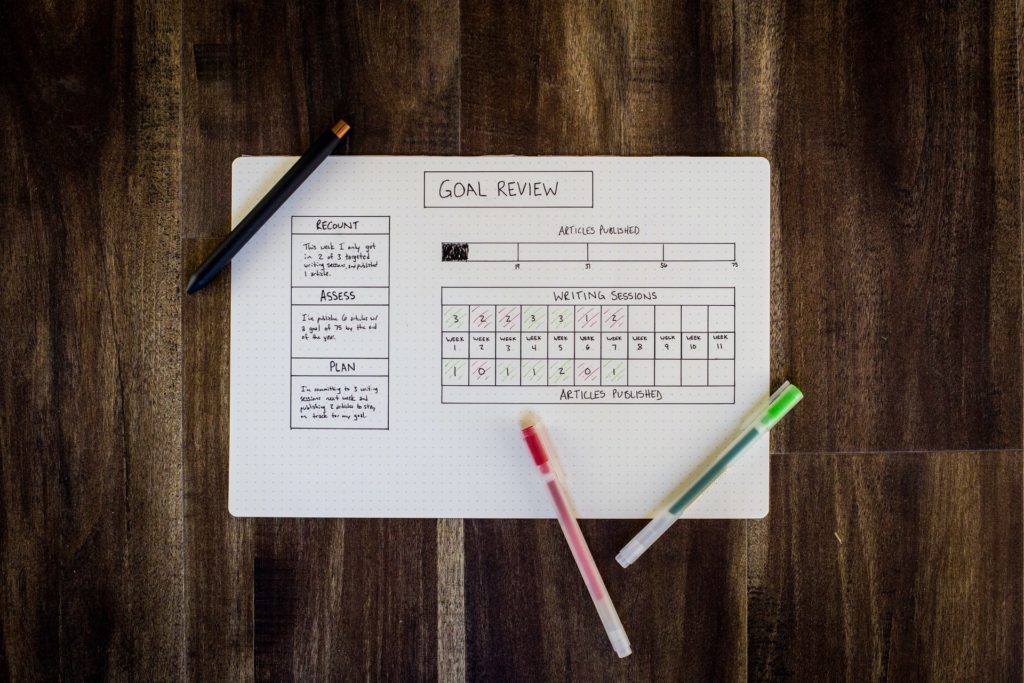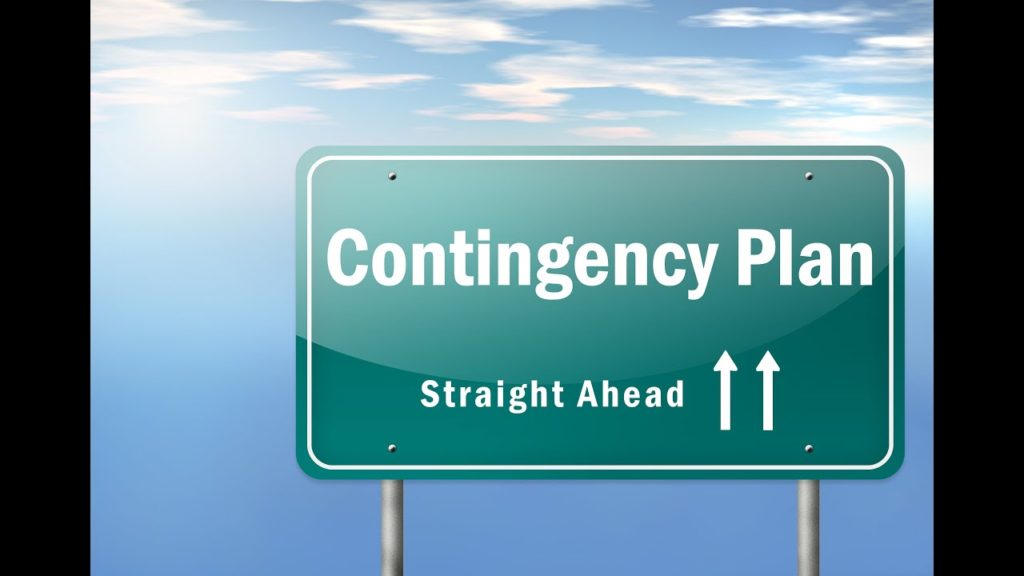I know; it’s May and I’m talking about re-starting your New Year’s resolution. But there’s a good reason for that. For the past several weeks, as I’ve pulled into the parking lot of my local gym, I’ve noticed fewer and fewer cars. After all, it’s around this time that many New Year’s resolutions centered around health and fitness begin to fail.
Studies show that 85% of New Year’s resolutions fail for a variety of reasons. Mostly it’s because your execution strategy was all wrong, or you didn’t have a strategy, to begin with. In this article, I will show you how you can jump-start your New Year’s resolution and set yourself up for success.
Find your WHY

Why did you make your New Year’s resolution?
If you answered, “Because I want to lose 20 pounds”, “Because I want to look good in a bathing suit,” or “Because I want to bench press 150 pounds”, you started by setting a goal. And that is where you went wrong.
The difference between a WHY and a goal
Your WHY is a fundamental building block for success. Your WHY is your purpose. It feeds your determination and compels you to stay the course when you feel unmotivated. Your WHAT are your goals. Goals have outcomes but rely on a purpose.
Don’t get me wrong; goals are great…and necessary. You need goals, so you know what you’re working towards. With a defined goal, you can develop a plan, define your tasks, create a schedule, and execute. A goal keeps you focused on the outcome. If you complete all of the steps you laid out, there’s no way you won’t meet your goal.
But what happens after you meet your goal? What comes next?
If your goal is to lose 20 pounds and you achieve that goal, what do you do now? Is that the end? What happens next?
Why a why is more important than a goal
Your WHY is your purpose. It lives on long after you achieve your goal. A WHY gives your goal reason, inspiration, and a continual desire to set new goals. With a defined purpose, you’ll continually want to evolve and improve so you can sustain and maintain what you’ve achieved. Your HOW, which we’ll talk about in a minute, are the steps you take to achieve your goals. Your WHY is the glue that holds the whole process together.
A WHY goes much deeper than goals. Without a strong WHY, it’s going to be difficult to keep yourself grounded when something disrupts your journey. All too often, we use any number of excuses to make poor eating decisions or skip a workout, then tell ourselves we’ll get back on track. This is exactly where our New Year’s resolutions fail.
What a WHY looks like
Your WHY is a resounding, impactful reason for wanting to do something. You may already have it but never articulated it or put it into context, so it would compel you to take consistent action.
I found my WHY by accident. More than 20 years ago, I recall seeing an older woman (in reality, she was the age that I am now) struggle to walk up a flight of stairs. She was weight-challenged and had serious mobility issues, all of which limited her freedom, independence, and ability to do day-to-day tasks. At that point, I decided I never wanted that to be me. My WHY became apparent.
“I want to be healthy, mobile, and independent so that I can enjoy myself in my 50s, 60s, 70s, and beyond.”
Jamy Lomento
That statement is what keeps me active; it’s what propelled me through my ACL recovery and is a reminder not to eat cookie dough every day.
Craft your WHY
Now it’s your turn. Before you revisit your New Year’s resolution or commit yourself to a new goal, find your WHY. Grab a piece of paper and make a list. Your WHY should be simple and clear, and follow this format: I WANT TO_____SO THAT_____
- “I want to create a healthier me so that I can live a longer, more active life with my family.”
- “I want to serve as an example to my children so that they don’t develop the same bad eating habits that I did.”
- “I want to be stronger so that I lessen the impacts of genetic osteoarthritis in my senior years.”
Take your time with this process. It might take a couple – or a dozen – try until you get one that resonates with you. And when I say resonate, it should hit you in the face like a brick. Make it powerful!
Once you find one, jot it down below and hang it up somewhere. Then congratulate yourself! You now have a foundation from which to tackle your goals.
Choose your goal second

If this New Year’s wasn’t your first rodeo in setting a goal to lose 20 pounds or bench press 150 pounds, you undoubtedly made some effort to work towards that goal, as did millions of other people. If everyone has the same goal, why do some succeed where others fail?
Having a goal is not the goal
In my macro counting days, I was introduced to Atomic Habits by James Clear that completely blew the doors off everything I thought about goal setting.
Instead of trying to achieve goals, Clear suggests we focus on building systems instead.
What’s the difference? Succinctly put from Clear:
“Goals are good for setting direction, but systems are best for making progress.”
James Clear
Systems are the frameworks and repeatable processes put in place to achieve a goal. Systems include specific steps happening at a specific time, which lead to a specific outcome.
What does this look like? Let’s use the example of your goal to lose 20 pounds. To do this, your system would be to prepare your meals every week, develop a weekly exercise program, and define a way to capture the results of your progress.
All systems should lead to habits
Taking the time to develop a system to support your goals increases your success rate two to three times over not having a system. A system requires you to be much more deliberate in your approach.
Continuing with the example of the 20-pound weight loss goal, if your system requires that you prepare your meals weekly, you will have to develop a habit to shop and cook for an entire week every weekend.
Executed consistently, the tasks we perform in a system become habits. When habits become automated, we perform them with much less resistance than we do tasks we occasionally do.
It’s building automated habits that we’re after, and it takes about 66 days for a new habit or new behavior to become automatic. It seems like forever, doesn’t it?
Focus on small changes and consistency
Yeah, 66 days does seem like a long time, but when was the last time you had to put a ton of effort into brushing your teeth every day? You don’t think about it; you just do it.
Developing the systems to achieve a goal seems like a monumental task. And it can be if you tackle it all at once. Instead of making sweeping changes and upending your life, which is likely to cause more anxiety than the work needed to achieve your goal, focus instead on making small, incremental changes, and execute those consistently.
Once a small change becomes a habit, add another one. And another one. Strung together, small steps add up to massive change. Small steps are manageable. Small steps help build confidence. Small steps help build consistency.
Sticking with the meal preparation part of your system, instead of trying to cook a whole week’s worth of meals in one day, decide that you’re only going to prepare for breakfast and lunch and only prepare 2 days’ worth of meals. Small changes can be just as impactful and easier to execute for the 66 days needed to become automated.
A roadmap for your systems

Now that you’ve identified what systems are needed to support your goals and what habits you need to execute your system, you need a plan to make it all happen. Left to chance, you’re unlikely to have success with your system, and therefore your ability to achieve your desired goal – or any goal at all.
Think of it this way: if you are in Philadelphia and plan to drive to Kansas City, you stand a much better chance of getting there quickly and with little hassle if you use a map instead of just driving west.
Plan before you execute
“Failing to plan is planning to fail” – Ben Franklin, Winston Churchill, and Alan Lakein*
Ben Franklin, Winston Churchill, and Alan Lakein (multiple sources cite multiple authors)
Regardless of who said it, the sentiment is the same. The success of your goals, system and habits depends on the plans you create to achieve them.
Just like your systems, your plans should be well thought out, not throw together all willy-nilly. Ask yourself some questions:
- What do you have to implement your system?
- You have a weekly menu and enough meal storage containers for four meals you will prepare each week.
- What do you need to implement your system?
- You have to shop for the ingredients for your meal prep menu.
- What time of the day/week will you perform the habits needed to execute your system?
- You will develop your menu on Wednesday, shop on Friday and cook on Sunday, every week.
- Who do you need to implement your system?
- You will communicate your goal to your family and friends so they can support you and help you reach your goal.
As you can see, there is quite a bit to do before you even start to execute the actual habits of your system of preparing your meals. Some must occur before others for them to be effective or to be completed at all.
I’d argue that the most important of these is getting support. Nothing will sabotage your efforts more than friends or family members who don’t understand why you have a system, let alone how those systems need to work for you to achieve your goal. If they can’t help, at least make sure they don’t hurt your efforts.
Build in contingency plans

“If anything can go wrong, it will go wrong, at the worst possible time”
Murphy’s Law
Nothing will upset your plan like the unexpected. Yet this is how life rolls….stuff happens. When it does, your best chance of remaining on track or getting your system back on track quickly is to have a backup plan.
Build your Plan B while building Plan A
Building a Plan B doesn’t have to be complicated. It has to get you over the hump until you can resume Plan A. The easiest way to look at this is with an “If this, then that” statement.
For example, if your storage containers melt in the dishwasher, then you’ll use plastic storage bags. If you shop and cook on Friday and Sunday, then you’ll do everything on Saturday.
What you cannot do is blow your Plan B altogether. This is why is it critical to develop a system, plan, and contingency plan you can consistently execute. If you design a system you cannot execute, you set yourself up for failure, which diminished your confidence in your ability to achieve your goal.
For example, don’t design a system that requires you to retool your kitchen, buy weird foods you don’t normally eat, or develop a meal prep plan that is completely at odds with your current schedule or lifestyle. Not only will you run into mental and physical resistance, but you’ll end up feeling resentful at having systems in the first place.
All of that is counterintuitive to what you’re trying to accomplish. Things that are completely counterintuitive are reasons why we give up on our goals and New Year’s resolutions.
Wiggle room
Again, life happens. There will come a time when neither your Plan A nor contingency Plan B doesn’t work. If you have to travel unexpectedly and cannot meal prep at all, what do you do?
You do the best you can and find your wiggle room.
Just because you can’t shop, cook and prep doesn’t mean there aren’t little things you can still do to keep the forward momentum going towards that 20-pound weight loss goal. With the practice of creating systems under your belt, you know to create new ones in your new, temporary environment.
If convenience stores become your supermarket, look for more healthful foods than chips or hotdogs. They’re there, I promise. Use your “If this, then that” statement to work down the scale of more healthful foods to less healthful foods and choose more of the former.
Reflect on your WHY to feed your determination to stay on track until such time as your back on your own turf.
Settle in for the long haul
Despite quick-fix promises for overnight six-pack abs and slimmed down thighs, weight loss and muscle gain goals take time. Progress is made ounce by ounce over the course of several weeks. Instead of focusing on the time it takes to achieve your goal, focus instead on how well your systems support your goal.
Focus on perfecting your systems, not your goal
“You do not rise to the level of your goals. You fall to the level of your systems”
James Clear
There are a dozen ways to attack a goal, but only a few of those will work for you. When you devote meaningful time to put the systems in place to achieve your goal and execute that consistently, the outcome takes care of itself.
When you focus on perfecting and fine-tuning your systems, they become easier to automate. Once they become automated, you have to put less effort into executing them. This, in turn, makes achieving your goal seem – well – effortless. And way more achievable.
If your shopping, cooking, and meal prepping system aren’t working for you, re-tool it. Maybe you start looking for more ready-made or pre-chopped foods to cut down on the prep work. Or maybe you settle on a few menu items that you know you can batch cook because you don’t mind eating them for several days in a row.
Perfecting your systems takes time, but is well worth the effort.
Celebrate micro-wins
Sticking to anything where gains show up in minuscule ways is tough to maintain. When you are celebrating micro-wins along the way, your build your own confidence simply by showing yourself that you can do anything you set your mind to.
So, congratulate yourself when you set up your first system. When you follow that system consistently for a few weeks, stop and look back on how far you’ve come and marvel at your strength and determination. When you automate a system, reflect on the hard work it took to get there. You deserve all the kudos in the world for that!
Tying it all together
I’ve thrown a lot at you and may not have clearly articulated on paper what appears in my head and what I’ve achieved myself. So, I’m going to tie it all together using myself as an example:
Your WHY drives your GOALS that build your SYSTEMS which fuel HABITS that need PLANS
My WHY: I want to be healthy, mobile, and independent so that I can enjoy myself in my 50s, 60s, 70s and beyond
My GOAL: Lose 20 pounds
My SYSTEM: Establish a Monday through Friday morning workout schedule and meal prep plan
My HABITS: Set out my gym clothes and pack my gym bag every night; Pack my lunch bag every night.
My PLANS: Plan my weekly menu on Friday, shop on Saturday, cook and store my food on Sunday.
My CONTINGENCY PLAN: If I miss a Monday through Friday morning workout, walk for 30 minutes on the weekend. Never let two consecutive days go by without exercising. If I don’t have time to shop and prepare meals, have specific meals planned from the deli or convenience store. Don’t eat lunch out more than 1 day per workweek.
If this still seems confusing, I encourage you to pick up James Clear’s book Atomic Habits. He has free downloads available on his website to walk you through the process of developing your own systems and habits. I guarantee it to be life-changing.
Final Words
Embrace the process of creating systems instead of goals, and commit yourself to them. Take small, incremental steps until you get the hang of it. Once it becomes automate, add another, then another.
Goals have a finite end point – systems last forever. What’s more, repeatable systems can be used and re-tooled to meet a variety of challenges.
Wash. Rinse. Repeat.

